Bell Helicopters: A Legacy of Global Innovation
| ✅ Paper Type: Free Essay | ✅ Subject: Business |
| ✅ Wordcount: 4508 words | ✅ Published: 13th Sep 2017 |
Abstract
Bell Helicopters began as an adventure of Lawrence Bell when he created Bell Aircraft Corporation. Through his admiration for aviation, a company grew that would help the allies, with the P-39 fighter and B-29 bomber, win the Second World War and conquer the demon of the sound barrier by reaching Mach 1 with the X-1 flown by Captain Chuck Yeager. When Larry Bell turned his passion to vertical flight, a new industry was born, the helicopter. Bell Aircraft would become the first company to mass produce the helicopter and produced such icons as the Bell Huey, Huey Cobra, and Bell Kiowa. These helicopters would redefine modern warfare and pave the way for civilian use of the machines. Bell Helicopters would emerge from the Bell Aircraft Corporation and produce helicopters for the world. The Model 206, Jet Ranger would see significant use in every corner of the globe in almost any helicopter job imaginable. Bell Helicopters would create alliances with companies such as Agusta, Boeing, and Air Methods Corporation and eventually merge with and become a subsidiary of the global Textron Corporation. Bell Helicopter continues to be an international leader in technologies and airframes with annual global revenue of $3.5 billion, and whose services and products, such as the Bell 505-X and the Bell 525 Relentless, will serve the global economy for the far-reaching future.
Get Help With Your Essay
If you need assistance with writing your essay, our professional essay writing service is here to help!
Find out more about our Essay Writing Service
Helicopters have played a vital role in aviation since their inception in the late 1930’s. While airplanes travel specifically from point to point, helicopters provide the enroute services to the destination. The helicopter was born during the first half century of powered flight and several key inventors at the time stand out. This paper will follow one of them, Lawrence Bell, namesake of Bell Helicopters. During the early years of flight, airplanes were capturing the hearts of crowds everywhere with their ever-increasing speeds, distances, and capabilities. Larry Bell, an aircraft designer and manufacturer saw the potential for a closer to the earth, smaller, more personal airframe that would serve both military and civilian needs. Bell Aircraft Corporation, as Bell Helicopters was initially named, would begin by producing aircraft for the WWII effort and followed with vital X- programs in aircraft design. Their aircraft would provide the Axis powers with the equipment necessary to win the war and the development and realization of supersonic flight that followed. When Larry Bell realized the need for a civilian version of military helicopters, Bell Helicopters was established and has grown today into an international phenomenon that influences people all over the world. Almost all communities in the world are effected by the work that helicopters perform on a daily basis and a significant portion of those helicopters have been built by Bell Helicopters. This paper shares an insight into the history, formative years, programs, legacy, current and future products, mergers, international challenges and businesses, and future forecast for Bell Helicopters; a legacy of global innovation.
Larry Bell: The Nucleus of the Innovation
 Lawrence Bell was born in a rural town in Indiana in 1894, but his love of aviation and airplanes began, like so many aviation enthusiast, after attending an airshow, when his family moved to California just before his 16th birthday. Bell never finished high school and dropped out to join his older brother, Grover, who had become an exhibition pilot, working with Lincoln Beachey and pioneer airplane builder Glenn L. Martin of the Martin Company.
Lawrence Bell was born in a rural town in Indiana in 1894, but his love of aviation and airplanes began, like so many aviation enthusiast, after attending an airshow, when his family moved to California just before his 16th birthday. Bell never finished high school and dropped out to join his older brother, Grover, who had become an exhibition pilot, working with Lincoln Beachey and pioneer airplane builder Glenn L. Martin of the Martin Company. 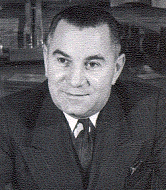 Larry Bell began to work as an aircraft mechanic but became a stockroom clerk after his brother was killed in an aircraft accident. Moving up the company, Bell rose to vice president and general manager in 1920, of the aircraft manufacturing and demonstration company. Nevertheless in 1925, after disagreements with Martin, Larry Bell left the Martin Company. It would be three years before he would return to the aircraft manufacturing business, and this time, Bell was promised guarantees of interest in the company. That company, Consolidated Aircraft, would give Bell the experience he needed to foster his own company, and when Consolidated moved to California from New York, Larry Bell and his general manager would stay behind and develop their own company.
Larry Bell began to work as an aircraft mechanic but became a stockroom clerk after his brother was killed in an aircraft accident. Moving up the company, Bell rose to vice president and general manager in 1920, of the aircraft manufacturing and demonstration company. Nevertheless in 1925, after disagreements with Martin, Larry Bell left the Martin Company. It would be three years before he would return to the aircraft manufacturing business, and this time, Bell was promised guarantees of interest in the company. That company, Consolidated Aircraft, would give Bell the experience he needed to foster his own company, and when Consolidated moved to California from New York, Larry Bell and his general manager would stay behind and develop their own company.

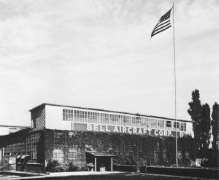 Bell Aircraft, opened its doors in July of 1935, by renting space in the former Consolidated Aircraft plant in New York (Lips, 2007). The company would build its first aircraft, the XFM-1 Airacuda, for the U.S. military, in 1937. Even though only thirteen airframes were built, it proved that Bell Aircraft Company could produce high quality, innovatively designed aircraft. The company was substantiated.
Bell Aircraft, opened its doors in July of 1935, by renting space in the former Consolidated Aircraft plant in New York (Lips, 2007). The company would build its first aircraft, the XFM-1 Airacuda, for the U.S. military, in 1937. Even though only thirteen airframes were built, it proved that Bell Aircraft Company could produce high quality, innovatively designed aircraft. The company was substantiated.
Establishing a Legacy
In 1938, Bell was sent to Europe with other leaders in the aviation industry to observe aviation capabilities at the time. While in Germany, Bell was enthralled by the German mass-production assembly lines as opposed to the workshop, single airframe production at home. He would write home “Production methods here are far superior to anything in America or any other country, because they’re doing this on a large scale that lends itself to progressive production methods” (Lips, 2007). During his tours of the German production factories, Larry Bell would see a craft that would profoundly impress him, a Focke Fa 61 helicopter. He would file this away for later when the aircraft would change him and his namesake company.

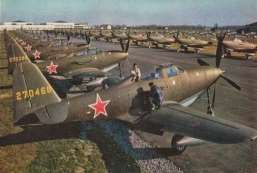 On returning to Buffalo, N.Y., Bell would introduce the mass production he had observed in Germany. In 1938, he would begin design of an aircraft that would allow the company to go from producing only 13 aircraft in a year to assembling over 20 a day, innovating the mass production methods for aircraft assembly. This aircraft, the P-39 Airacobra, of which over 9,500 would be built was initially intended for the American and British military. Though design augmentations and changes would prove the aircraft undesirable for its original clients, the Soviets, through the Lend-Lease Act of 1941, would acquire the airframe and become Bell’s first international aircraft transactions.
On returning to Buffalo, N.Y., Bell would introduce the mass production he had observed in Germany. In 1938, he would begin design of an aircraft that would allow the company to go from producing only 13 aircraft in a year to assembling over 20 a day, innovating the mass production methods for aircraft assembly. This aircraft, the P-39 Airacobra, of which over 9,500 would be built was initially intended for the American and British military. Though design augmentations and changes would prove the aircraft undesirable for its original clients, the Soviets, through the Lend-Lease Act of 1941, would acquire the airframe and become Bell’s first international aircraft transactions.
The Second Great War
During World War II, Bell Aircraft would diversify and develop separate divisions to facilitate the production of other projects for the war effort. It would also create the Bell Modification Center, which during the war would modify aircraft and give valuable experience for the Bell employees when the time came to transition aircraft from military to fulfill civilian 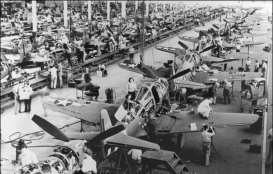 needs. The Bell Aircraft Company would continue its development of aircraft with the P-63 King Cobra, a modified and upgraded version of the P-39 Airacobra. The company would also open a plant in Marietta, GA that helped produce the famous B-29 bombers until 1946 when the production ceased.
needs. The Bell Aircraft Company would continue its development of aircraft with the P-63 King Cobra, a modified and upgraded version of the P-39 Airacobra. The company would also open a plant in Marietta, GA that helped produce the famous B-29 bombers until 1946 when the production ceased.  This plant, the first in the South would stand to be an economic boom for the region as most aircraft manufacturing was completed in the Northeast or West Coast of the U.S. (Superfortress,2017).
This plant, the first in the South would stand to be an economic boom for the region as most aircraft manufacturing was completed in the Northeast or West Coast of the U.S. (Superfortress,2017).
The X Planes
America’s first jet powered airplane, the XP-59 was developed by Bell Aircraft in secrecy during 1942. Although the aircraft would never see combat during the war, the technologies and designs produced in the development of the XP-59 would usher the Americans into the jet age. In 1944, Bell Aircraft realized the need for a high-speed research aircraft that could explore and test new speed frontiers (Lips, 2007). On October 14, 1947, using a Navy engine, the Bell X-1 piloted by Captain Charles Yeager, would become the first aircraft to break the “impenetrable” sound barrier by traveling faster than Mach 1.0. The X-1 program would set the pattern for all future X-craft programs and the X-1 project defined and solidified the post-war cooperation between U.S. military needs, civil industrial capabilities, and research facilities (NASA,2008). Bell would continue with the X-planes creating the X-5, which was the first aircraft to test the ability to change the sweep angle of its wings in flight, and the X-14 (Type 68), a long running test platform for vertical takeoff and landing (VTOL) that incorporated vectored thrust. Bell Aircraft would become a leader in the theory of tilt-rotor VTOL, first with the XV-3 then with the X-22, a quad-ducted fan tilt-rotor. The XV-15, a tri-bladed rotating wing-pod VTOL, would take the company into a new direction by providing the technology that would set the stage for the future of vertical takeoff and landing aircraft.
No Runway Needed: the Age of the Rotorcraft

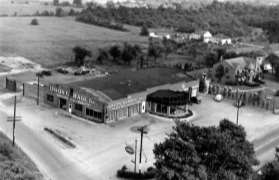 When Lawrence Bell first became intrigued in Germany with the helicopter design witnessed, he may not have known the true impact it would have on his future. Bell had heard of a young inventor and philosophy student, Author Middleton, who had developed a working model of a helicopter, and in 1941 brought him onboard to lead a team to create and construct the first Bell helicopter. The team would set up shop in a newly acquired, former Chrysler dealership, in Gardenville, N.Y. Six months later the team had a helicopter made of plywood beams, magnesium, fir and balsa wood rotor blades, and powered by a 165-hp Franklin engine, the Bell Model 30, who’s first flight was on December 29, 1942 (Bell Helicoters,2017). Production and design correction were made on the aircraft and in 1946 the renamed Model 47 was granted the first commercial type certificate for a rotorcraft. This would open the door for the increased research and development of further helicopters. Larry Bell, in response to marketing research, directed the engineering team to begin construction on a larger “aircraft of the future” for the civilian market. The answer from the team was the Bell 42, a 4 passenger helicopter whose design would endure into modern day helicopters. Unfortunately, there was no potential large scale civilian market for the new technology at the time and only two prototypes were made, forcing the Bell Helicopter Division to concentrate on military style helicopters.
When Lawrence Bell first became intrigued in Germany with the helicopter design witnessed, he may not have known the true impact it would have on his future. Bell had heard of a young inventor and philosophy student, Author Middleton, who had developed a working model of a helicopter, and in 1941 brought him onboard to lead a team to create and construct the first Bell helicopter. The team would set up shop in a newly acquired, former Chrysler dealership, in Gardenville, N.Y. Six months later the team had a helicopter made of plywood beams, magnesium, fir and balsa wood rotor blades, and powered by a 165-hp Franklin engine, the Bell Model 30, who’s first flight was on December 29, 1942 (Bell Helicoters,2017). Production and design correction were made on the aircraft and in 1946 the renamed Model 47 was granted the first commercial type certificate for a rotorcraft. This would open the door for the increased research and development of further helicopters. Larry Bell, in response to marketing research, directed the engineering team to begin construction on a larger “aircraft of the future” for the civilian market. The answer from the team was the Bell 42, a 4 passenger helicopter whose design would endure into modern day helicopters. Unfortunately, there was no potential large scale civilian market for the new technology at the time and only two prototypes were made, forcing the Bell Helicopter Division to concentrate on military style helicopters.
Bell Helicopter Division would continue the development of the Model 47 throughout the 1940s, but with the war effort and its associated revenue gone, a group of dissident stockholders would attempt a failed hostile takeover of the company. The company would weather union strikes and see its wartime employee number of 50,000 drop to less than 3,000 full time employees (Scranton, 2001).
The 1950’s saw a change for the company and in 1951 the Bell Aircraft Corporation Helicopter Division was relocated to Hurst Texas to separate and concentrate on the helicopter production for the military. The Korean war had ignited a requirement for helicopters and by 1953 the 1000th Model 47 rolled off the assembly line. In 1954, a critical component of modern day helicopters was developed, the turbine engine. This would give helicopters a more dependable form of propulsion and move the helicopter from a novelty into a fully functional presents in aviation. In 1956, Lawrence “Larry” Bell, founder and visionary of Bell Aircraft Corporation, passed away. His dreams and salesmanship for his aircraft, and his helicopters in particular, would set the stage for the Bell Helicopter Corporation to be established as a wholly owned subsidiary of Bell Aircraft Corporation in 1957 (Bell, 2017).
In 1956 Bell Helicopters, would produce a helicopter that would not only change the company but change the world, the Model 204. This was the first production helicopter to utilize the turbine engine and the timing of its development on the world stage could not come at a better period for Bell. The U.S. military was searching for a helicopter for its utility use and the Bell 204 was selected. Research and development and would continue into the 1960s when Bell would begin producing in mass, the now famous “Huey” helicopter, whose name was slang from the military designation HU-1, (helicopter, utility). The Vietnam War would see this aircraft, and the helicopter in general, go from an indulgence to a workhorse. The helicopter would play such 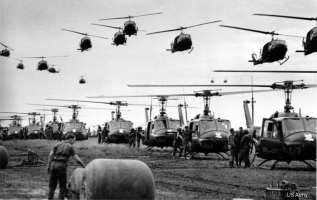 a major role in the conflict that the war would become known as “the Helicopter War”. Over 16,000 airframes have been built by Bell and its licensees of the Model 204 and 205, making it the most successful military helicopter ever built (Bell 205, 2017). This airframe would be the basis for helicopter models that are still being built and flown today. To assist the 204 in its wartime mission, the U.S. military would also require a more formidable aircraft, an attack helicopter, and Bell would answer with the Model 209. The 209 would be a slim, tandem pilot seated helicopter, that’s sole mission was with the armament that it carried. This was the first time a helicopter would be utilized in this fashion and over 1600 of the original production models were manufactured. Bell realized the effectiveness of the aircraft for militaries and to date has exported the product to the militaries of Bahrain, Israel, Turkey, Thailand, Spain, South Korea, Pakistan, Jordan, and Japan. These militaries, around the globe, will continue to fly variants of the aircraft into the 2020’s (Cobra, 2016).
a major role in the conflict that the war would become known as “the Helicopter War”. Over 16,000 airframes have been built by Bell and its licensees of the Model 204 and 205, making it the most successful military helicopter ever built (Bell 205, 2017). This airframe would be the basis for helicopter models that are still being built and flown today. To assist the 204 in its wartime mission, the U.S. military would also require a more formidable aircraft, an attack helicopter, and Bell would answer with the Model 209. The 209 would be a slim, tandem pilot seated helicopter, that’s sole mission was with the armament that it carried. This was the first time a helicopter would be utilized in this fashion and over 1600 of the original production models were manufactured. Bell realized the effectiveness of the aircraft for militaries and to date has exported the product to the militaries of Bahrain, Israel, Turkey, Thailand, Spain, South Korea, Pakistan, Jordan, and Japan. These militaries, around the globe, will continue to fly variants of the aircraft into the 2020’s (Cobra, 2016).
Although these two aircraft would become the mainstay of the military effort for the last half of the century, a smaller, lighter aircraft would be the true link between military and civilian rotorcraft usage for Bell; the Model 206. The 206 began life not as a military helicopter but as a civilian light helicopter in 1966 as “206A”, but was soon transitioned to its military version for a lightweight observation helicopter, the OH-58A “Kiowa”. The helicopter would perform well for the military and models C and D would be flown by the U.S. military into the new century. Sales of the OH-58A/C and D to foreign nations would include to Australia, Austria, Canada, Taiwan, Mexico, Dominican Republic, Saudi Arabia, and the United Arab Emirates (Kiowa, 2016). But for Bell, the 206 would provide a tangent that would enter the company into a new era; the domination of the civilian helicopter market. The Bell 206 Jet Ranger would become the world’s most utilized light helicopter. It would continue in production from the 1960’s until 2010 when Bell delivered its last B206BIII Jet Ranger having built over 8,400 aircraft. The Jet Ranger continues to be the safest single engine aircraft ever built, with the lowest accident rate of any aircraft, fixed or rotary wing (Huber, 2010).
Mergers and Ventures
In 1952 the company began its first joint foreign venture with Agusta of Italy, whom it gave permission for the licensing of the popular Bell 47. Production on several versions and models would continue for over a half century with Agusta building Model 47s, 48s, and the Huey, model 204. (Agusta, 2017). The Bell-Agusta relationship would continue into the tilt rotor category and in 1998 the Bell Agusta Aerospace Company (BAAC) would be formed to produce a civilian version of the tilt rotor vertical takeoff and landing aircraft designated the BA609. The collaboration was dissolved when Agusta merged with another European company, Westland in 2011 and the new company was named the Agusta Westland Tilt Rotor Company.
Agusta was just one of the joint ventures Bell Helicopter Company would enter into. During the World War II, Bell would collaborate with Boeing in production of the B-29 bomber, and from 1984 until 2000, would join in an alliance with Fuji of Japan to product that countries model 209 (AH-1) attack helicopter. In 1960 Bell Aircraft corporation was purchase and became a wholly owned subsidiary of Textron Corporation. This provided the financial umbrella for Bell to increase its long-term research and development involving helicopters and other specialty projects (Gale, 2006). More recently, in 2000, Bell Helicopters and Air Methods entered into a strategic alliance that will produce medical transport helicopter interiors for the Bell helicopters that service the Helicopter Emergency Medical Services (HEMS) industry.
To the Future and Beyond
Bell Helicopters maintains the focus required for creating rotorcraft to suite all the customer needs for the near and far future. From small to large, and with the capabilities to fulfill the roles that customers worldwide will demand, Bell Helicopters will continue to provide quality products at marketable prices. Under development are the Bell 505 Jet Ranger X, the Bell 525 Relentless, the VTOL V280 Valor. The Bell 505 is a five-place light helicopter that will fill a void in the Bell production line. The light helicopter category is the fastest growing of all the categories and the 505X is well suited to make the most of the needs of the consumers. The 525 Relentless will provide the super-medium helicopter clients with the performance and styling necessary to support a variety of customer needs, from oil industry transport, to medical services, to ultra-luxury transport. The VTOL V280 Valor will provide the enriched capability of vertical takeoff and landing and enhance the advantages of high speed deployment for the military sector. These aircraft, and the service and support that accompanies them, will cultivate the company’s future endeavors for decades to come.
Challenges and Trials
The demand for helicopter sales, like all aircraft, are cyclical and difficult to predict and forecast. These swings in demand for new helicopters, and the accompanying services, could have significantly varying degrees of success or be unanticipatedly less than prediction models for the future sales. As Bell Helicopter’s world-wide military sales and post-sales service are a significant part of its revenue base, at 59 percent in 2015 (Textron, 2016), congressional appropriations, international priorities for defense spending, and instability in global events can have a significant effect on the helicopter market. Changes in governmental regulations on the export of military hardware and services to certain countries also has an impact on the ability of Bell Helicopters to maintain its production predictions.
Civilian markets are just as unpredictable with factors relating to usage and economic stability. As industries reach a financial drip in production and operations, as recently in the oil and gas industry, who utilize helicopters extensively, demand for newer or replacement helicopters is shelved or new orders temporarily halted until operations have increased.
As Bell Helicopters are marketed in U.S. dollars, any volatility in the exchange rates for foreign nation’s currencies, or fluctuations in foreign economic or political stability can have a detrimental effect on sales revenues and the ability to operate for post-sales service.
New foreign regulations and laws concerning environmental protection, and those relating to climate change, are impacting the cost of product design and manufacturing and could affect the ability of Bell to operate in certain localities. The restriction of the operation of helicopters due to noise and emissions contributions in specified areas will have an impact on the requirement for new and existing products in countries with restraining regulations. Bell continues to develop and design quieter and environmentally friendlier products for inclusion into restrictive markets.
The International Partnerships
Bell Helicopters partners with over 50 global companies to provide the service and support for its worldwide customers. With logistical supply and service centers in Amsterdam, Prague, Canada, and Singapore, Bell Helicopters has a world-wide presence necessary to give customers responsive and accurate support. The Prague center is a state-of-the-art customization and delivery service center that upgrades the helicopter interiors of Bell’s customers to fit their individual needs. In Amsterdam, Bell Helicopters provides regional distribution and support for over 200 customers, in 55 countries spread across Europe, the Middle East, and Africa. Since 1974, the facility at Schipol, has been serving the European community by increasing the customer service capabilities. In Singapore, in addition to the marketing and service support provided to the military and civilian helicopter transportation industry of Asia, Bell Helicopters has opened a training academy for regulatory maintenance classes with theory and practical training (Gale, 2016). Bell’s largest manufacturing outside of the U.S. is conducted at Maribel, Canada. In 2016, Bell announced their plans for Mirabel to be the location for the final assembly of the new Bell 505X. Quoting Bell CEO, Mitch Snyder “Our operations in Canada have been, and will continue to be, a vital part of our commercial growth strategy and Maribel will remain a cornerstone of our global production, R&D, engineering, and certification activities”.
The Landing
Bell Helicopters continues to be a formidable force for the future of vertical lift. By maintaining production cost controls at or below governmental contracted rates and providing on-time delivery of products, Bell Helicopters maintains a leadership in the military procurement of contracts throughout the world. In the civilian side, the innovations of leading edge technologies, and providing outstanding support for the entire life cycle of their products, will allow Bell to grow their market share. Civilian tilt rotor transportation is in its infancy and Bell is positioned to take full advantage of its continued growth. By focusing on new opportunities that arise and pioneering innovative ways for meeting their customer’s needs, Bell Helicopters will flourish and continue the vision of its founder for the future of vertical lift flight.
References:
Lips, J. (2007), Larry Bell: Aviation’s Super Salesman, Retrieved from: http://airportjournals.com/larry-bell-aviations-super-salesman-2/
Picture of Lawrence Bell, Retrieved from: https://upload.wikimedia.org/wikipedia/ commons/d/d0/Larrybell.gif
Wright, T. (2011), Lieutenant Ivan Baranovsky’s P-39 An airacobra’s journey to the eastern front and back, Retrieved from: http://www.airspacemag.com/military-aviation/lieutenant-ivan-baranovskys-p-39-41818469/
Darling, R. (2017), Bell P-39 Airacobra, Retrieved from: http://www.flying-tigers.co.uk/wp-content/uploads/2017/01/ai2-P-39-Airacobra.-American-made-and-supplied-to-the-Russians.jpg
Goebel, G. (2015), The Bell P-39 Airacobra and P-63 Kingcobra, Picture Retrieved from: http://www.airvectors.net/avp39.html
B-29 Superfortress, (2017), Retrieved from: http://www.boeing.com/history/products/b-29-superfortress.page
NASA-Dryden History- Historic Aircraft X-1, (2008), Retrieved from: https://www.nasa.gov/centers/dryden/history/HistoricAircraft/X-1/index.html
Pic Chrysler Dealership, 1942, Retrieved from: http://www.bellhelicopter.com/ company/history/1935-1949
The History of Bell Helicopters 1935-1949, (2017) Retrieved from: http://www.bellhelicopter.com/company/history/1935-1949
Scranton, P. (2001), The Second Wave: Southern Industrialization from the 1940ls to the 1970’s, University of Georgia Press
The History of Bell Helicopters 1950-1959, (2017), Retrieved from: http://www.bellhelicopter.com/company/history/1950-1959
Agusta, A Finmeocian Company, (2017), Retrieved from: http://www.helis.com/ timeline/agusta.php
The Bell 205, (2017), Retrieved from: http://www.helis.com/database/model/9/
Bell AH-1 Huey Cobra, (2016), Retrieved from: http://www.militaryfactory.com/ aircraft/detail.asp?aircraft_id=13
Bell OH-58 Kiowa, (2016) Retrieved from: http://www.militaryfactory.com/ aircraft/detail.asp?aircraft_id=1
Agusta-Bell 206A Jet Ranger – History and technical description, HAB,(2011), Retrieved from: http://www.heli-archive.ch/en/helicopters/in-depth-articles/agusta-bell-206a-jet-ranger/
Textron Annual Report and Proxy, (2016), Retrieved from: http://investor.textron.com/ investors/investor-resources/annual-report-and-proxy-materials/default.aspx
Gale, T. (2006), Textron Inc., Retrieved from: http://www.encyclopedia.com/ social-sciences-and-law/economics-business-and-labor/businesses-and-occupations/textron-inc
Huber, M. (2010), Bell Ceases Production of its 40-year old Jet Ranger, Retrieved from: http://www.ainonline.com/aviation-news/aviation-international-news/2010-09-21/bell-ceases-production-its-40-year-old-jetranger
Cite This Work
To export a reference to this article please select a referencing stye below:
Related Services
View allDMCA / Removal Request
If you are the original writer of this essay and no longer wish to have your work published on UKEssays.com then please click the following link to email our support team::
Request essay removal


